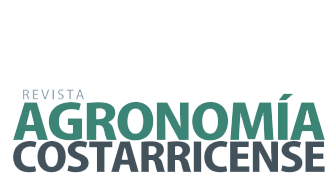Production of cañihua (Chenopodium pallidicaule Aellen) in Peru: an alternative crop for the future
DOI:
https://doi.org/10.15517/rja5zq95Keywords:
nutritional, nutraceuticals, phenolic compounds, abiotic resistance, sustainable developmentAbstract
Introduction. Cañihua has significant commercial potential due to its high nutritional values and nutraceutical properties. It is known for its resistance to adverse abiotic conditions compared to traditional grain crops. However, this phytogenetic resource has not been adequately exploited in Peru, which is reflected in its limited production, mostly confined to its region of origin, Puno. Furthermore, cultivation methods are limited to traditional techniques that yield low output. The lack of uniformity among crops, due to the great variability of the species, hinders its proper agronomic exploitation. Objective. To provide synthesized information about the current state of Cañihua in Peru. Analysis. Cañihua has superior nutritional properties compared to quinoa and amaranth, standing out in antioxidants and nutraceuticals due to its phenolic compounds and flavonoids. It is resistant to climatic variations such as droughts and rains, with relative humidity and low temperatures being ideal conditions. There is great variability among cañihua grains because it is not fully domesticated, which has not been classified in Peru. Organizing its types could optimize its use according to the grain type. Conclusions. Cañihua is a versatile food and has great potential for application in new ventures, such as bread, cookies, cakes, and noodles. However, new studies focused on evaluating the genetic diversity of cañihua through agronomic, chemical, molecular, and genomic characterizations are necessary.
Downloads
Downloads
Published
Issue
Section
License
Copyright (c) 2025 Agronomía Costarricense

This work is licensed under a Creative Commons Attribution-NonCommercial-NoDerivatives 4.0 International License.
The author (s) must authorize Revista Agronomia Costarricense Journal the right of its publication which will be registered with the Creative Commons Attribution-NonCommercial-NoDerivs 4.0 license. Author (s) may include their publication in an institutional repository clarifying that the publication was done in the Agronomía Costarricense Journal.
Once the volume of the respective period has been published, the digital version can be accessed, which allows managing a self-archive of the document or documents of interest, in the site selected by the author.
Otherwise, the main author must attest in writing, that the presented information is original and unpublished by any other media. Also, must have the authorization of the institution where the investigation was conducted.




